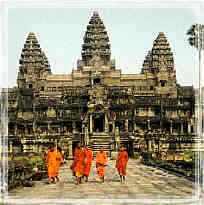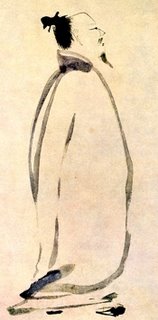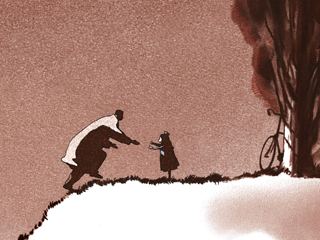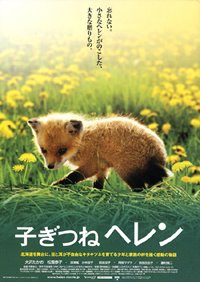Chinese influence is found in the written languages of many east and south east Asian countries. Several Asian languages have been written with a form of Chinese characters, such as Khitan, Miao, Nakhi (Geba), Tangut, Zhuang, Jurchen, Yi, Vietnamese, Korean, and Japanese. Of these tongues only the Japanese still uses a sizeable number of Chinese characters. In modern Vietnam and North Korea Chinese characters while still figuring prominently in historical documents and classical literature have become virtually extinct. In South Korea language policy has swung back and forth since 1945 but still displays an unmistakable trend toward the “de-sinification” of the Korean language.
This article looks at the written language policies, historically, in Japan and South Korea, and also Vietnam and North Korea to a lesser extent. In addition it will examine the future of Chinese characters in Japanese and Korean scripts, which may change. China’s re-emergence as a regional power could potentially create the need for greater homogeneity in nations using Chinese characters to aid communications.
The Incompatibility between the Chinese Writing System and the Japanese, Korean, and Vietnamese languages
Spoken Japanese, Korean, and Vietnamese are linguistically unrelated to Chinese. Japanese and Korean are probably both members of the Altaic language family and are both agglutinative; Vietnamese belongs to the Austroasiatic language family. All three languages are considered by linguists to be “language isolates.” On the other hand, the Chinese language, with its many “dialects”, belongs to the Sino-Tibetan language family which is largely monosyllabic and tonal language.
While the application of the logogrammic nature of the Chinese writing system to the Chinese language itself is rather straightforward, to the Vietnamese and especially to agglutinative Japanese and Korean languages it presents linguistic nightmares. The difficulties meant the Chinese writing system was historically adopted by these countries in various capacities. These capacities included borrowing of complete Chinese characters, the invention of new Chinese-like characters and rendering the native script using Chinese characters. Knowledge of classical Chinese, however, was always exclusive to the elites. The majority of the population was either illiterate or they would rely on a mixed script consisting of Chinese characters and some sort of phonetically-based script either developed indigenously or derived from Chinese characters used for their pronunciations.
Language Policies Regarding the Written Language in Japan
The existence of an earlier indigenous runic writing, known as kamiyo moji, prior to the introduction of Chinese to Japan in the 4th century AD, has never been proven. Initially after its introduction to Japan, like in China, classical Chinese was only read and written by highly educated and sinicized Japanese scholars. This was until a system of diacritic marks placed alongside the Chinese text, called kanbun, was developed to aid ordinary but educated Japanese speakers to decipher classical Chinese. Around the 5th century, a system of using Chinese characters to phonetically represent Japanese sounds, called manyogana, was developed initially to record indigenous Japanese poetry. Manyogana eventually gave rise to hiragana and katakana, two of the four syllabaries that make up the modern Japanese writing system. The other two are kanji, Chinese-based characters that represent Chinese loanwords and some native Japanese morphemes, and romaji or romanized Japanese.
Prior to the Meiji period (1868–1911), there had already been some haphazard suggestions to reform the Japanese writing system as a result of contacts with the West, notably the Portuguese. However, more concrete institutional attempts to amend the orthography did not begin until the Meiji period when the whole country was fervent in the attempt to catch up with the West. The major focus of these attempts was to achieve a closer correspondence between spoken and written Japanese (genbun-itchi) by eliminating obsolete grammar forms and limiting the use of kanji in the writing system. In 1919, the Ministry of Education issued a plan to limit the number of kanji to 2,616 and to eventually replace all the kanji by an all-phonetic script. However, this plan, like many others before and after it, did not meet with much success, partly because of opposition from the conservatives who staunchly believed in the immutability of kanji as part of the Japanese cultural heritage. Such a belief is still quite widely held even today.
In the Occupation years, the “anti-Chinese character” movement got a boost from the Occupation Authorities who advocated the exclusive use of kana or even romaji in school textbooks. However, such radical proposals were met with opposition from the Japanese officials and educational leaders. In 1946, the government issued a series of script reform proposals that included the specification of 1,850 kanji for daily use (toyo kanji), a list that was subsequently revised (and augmented in 1981 to 1,945). Today, while many of these post-war reforms have remained, one has witnessed not only a gradual relaxation of these restrictions, now called “recommendations”, but also a diminishing role of the educational authorities in script reform. In 2004, there was actually a further revision and huge expansion of the list of kanji for personal names (kinmeiyo kanji). It has been speculated that such a move may represent a government-sponsored attempt to bring about a de facto expansion of the toyo kanji list. It is estimated that today a well-educated Japanese person may know about 3,500 kanji.
Language Policies Regarding the Written Language in Korea
There is almost no evidence for the existence of any indigenous writing in Korea prior to Chinese. The institutionalisation of the Chinese language in the peninsula began probably around 108 BC when China’s Han Empire established four commanderies in northern Korea. By the 5th century AD, the Koreans were starting to write in Classical Chinese (in Korean hanmun). Systems were also subsequently devised to use simplified Chinese characters to phonetically transcribe Korean, namely hyangchal, gugyeol, and idu (official reading) which was almost certainly a predecessor of Japan’s katakana. The Koreans borrowed a huge number of Chinese words (hanja) and also invented about 150 new characters (hanchao); now these words represent about 60% of the Korean vocabulary.
In order to promote literacy among the common people and to assist in studies of Chinese historical phonology, the Korean phonetic alphabet (hangul) was invented in 1444 by a few scholars centering around King Sejong (1418-1450), the fourth king of the Joseon Dynasty, and the alphabet was promulgated in 1446. Hangul was probably based on other scripts such as Mongolian and ‘Phags Pa. Despite its simplicity and efficiency, most educated Koreans continued to write in classical Chinese or in Korean using the gugyeol or idu system.
In the four centuries after its invention the popularity of hangul continued to grow especially among common people in spite of opposition from the Confucian elites. As the result of growing Western influences and Korean nationalism, the twenty-sixth king of the Choson Dynasty (1392-1910) abolished the official status of classical Chinese and rendered Korean the official language in 1894. While classical Chinese was to be continued, a mixed writing system combining hanja and hangul, inspired by the Japanese writing system, was to be used in all government documents, a practice emulated by magazine and textbook publishers. In 1896, the influential newspaper, Toklipsinmun (The Independence Time), advocated for the first time the exclusive use of hangul.
The “hangul-only” movement, however, was suppressed when Japan annexed Korea in 1910. During its 35 years of occupation, in its attempt to culturally assimilate the Korean people to its empire, the Japanese government even prohibited the Korean language elementary school education.
After the Second World War, Korea was divided into the North and the South. In South Korea, a “hangul-only” law was passed in 1948, but the law also allowed for a “transitional period” during which the use of hanja was to be tolerated. This period, however, has proven to be very long, even though there is a clear overall trend toward the exclusive use of hangul in everyday Korean society. Today, Chinese characters are still used extensively in disambiguating the large number of homonyms in academic papers, official documents, newspapers, and high-level corporate reports. (It is however important to point out that, since the Korean language has a greater variety of sounds than Japanese, its problem with ambiguous homophones is relatively less severe than that of its Japanese counterpart. This may explain why Japan needs to retain a bigger inventory of Chinese characters in its written language.) This inconsistency in the implementation of the law can be attributed to the swinging back and forth of South Korea’s language policy itself. For instance, in the early 1970s, while President Park Chung Hee urged that the nation’s schools discontinue the study of hanja, the government itself published a list of 1800 Basic Characters for Chinese Script Education in 1972. Today, the knowledge of hanja is considered to be a sign of education and refinement.
In North Korea, hanja has been banned from virtually all public displays and media since 1949, with the exception of a few textbooks and specialized books. However, in the late 1960s, it was eventually phased back in. North Korean high school students are expected to know 2000 hanja and university students an additional 1000.
Chinese Characters in the Vietnamese Language
For almost millennium (111BC to 938AD), Vietnam was under the direct rule of China. Classical Chinese (chu nho or chu han in Vietnamese) was the official written language of the country and even after its dependence from China. As the result of such massive Chinese influence, there are a large number of Sinitic words in the Vietnamese vocabulary.
After Vietnam gained its independence from China, scholars began to develop a logographic script, known as chu nom (southern script) to represent Vietnamese speech. It is a classical vernacular script based on orthodox Chinese characters supplemented by a set of new characters specifically devised to write Vietnamese words. These modified Chinese characters usually consist of a phonetic element and a semantic component, both based on Chinese. The resulting look-alike Chinese characters, completely unintelligible to people from China itself, are considerably more complex than the originals and have never been considered as part of the greater family of Chinese characters. For nearly 1000 years after independence, the chu nom script became widely used in daily lives and Vietnamese literature before the French colonial government decreed against its use in 1920. It is estimated that nowadays fewer than 100 scholars worldwide can read chu nom.
Today, the Vietnamese use quoc ngu (national language), an alphabet based on the Latin one with some digraphs and diacritics. Based on a form developed earlier by Portuguese missionaries, quoc ngu was developed by French Jesuit missionaries who came to Vietnam in the 17th cenutry. By the 18th century, quoc ngu had more or less acquired the form used today.
Future of Chinese Characters in the Written Language of Japan, Korea, and Vietnam
Two forces, among others, may help to shape the future of Chinese characters in the written language of Japan, Korea, and Vietnam. First, there is apparently a growing wariness about the inability of the younger generations to understand their traditional culture, given their poor Chinese character literacy in South Korea and even Vietnam. For example, president Kim Dae Jung of South Korea declared that “it will be difficult to understand the classics or traditional culture if we cannot read Chinese characters.” Therefore, in 1999 the South Korean Ministry of Culture announced that Chinese script would be used alongside hangul in government documents and on road signs. By the same token, alarmed by the fact that Vietnam’s written history is virtually inaccessible to 80 million speakers of the language, the Vietnamese government is also reassessing the role of Chinese script in preserving cultural traditions. As a result, an Institute of Sino-Nom Studies has been established to pursue research in this area.
The second force has to do with the re-emergence of China as a regional and global power and the growing integration of the Northeast Asian economies as a powerful regional economic bloc. As put forward by the Korean language and Education Research Association in its recommendation to the Ministry of Education to reintroduce instruction in hanja at the primary school level, there is an increasing need for Chinese character literacy “at a time when the nation is entering into keen competition with Japan and China.” There is also the belief that being a member of the so-called Kulturkreis of Chinese characters (hanjamunkwakwon) would guarantee Korea a firm place among the countries of the future Northeast Asian Economic Community (tongpuka kyongchekwon), under the new slogans of internationalization (kukchehwa) and globalization (segyehwa). At the practical level, there is also an increasing need for countries that use or have used Chinese characters to standardize these characters for informational interchange and to conform to the Unicode Standard, a process known as “Han unification” (Figure 3). The Ideographic Rapporteur Group (IRG) responsible for this process comprises experts from Chinese-speaking countries, Japan, North and South Korea, and Vietnam. Processes like this could pave way for even more future cultural and technological exchanges within the sinitic sphere.







